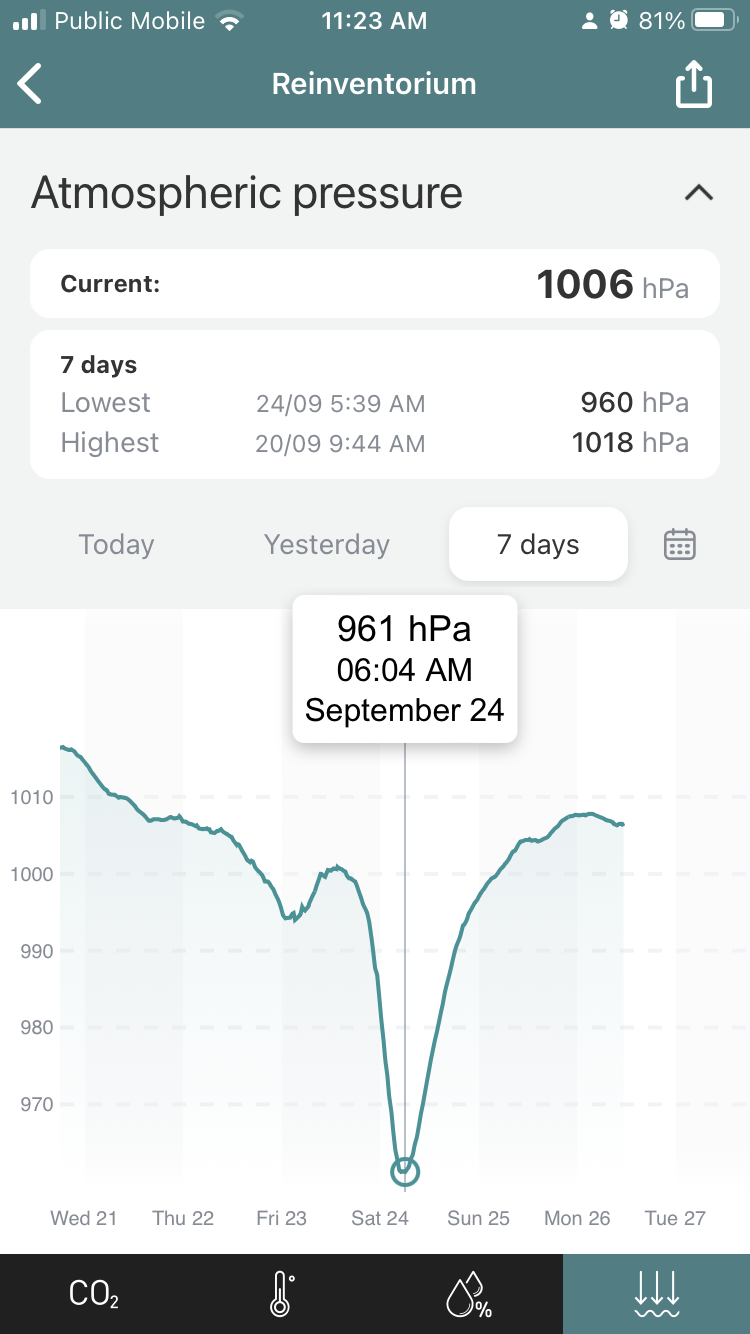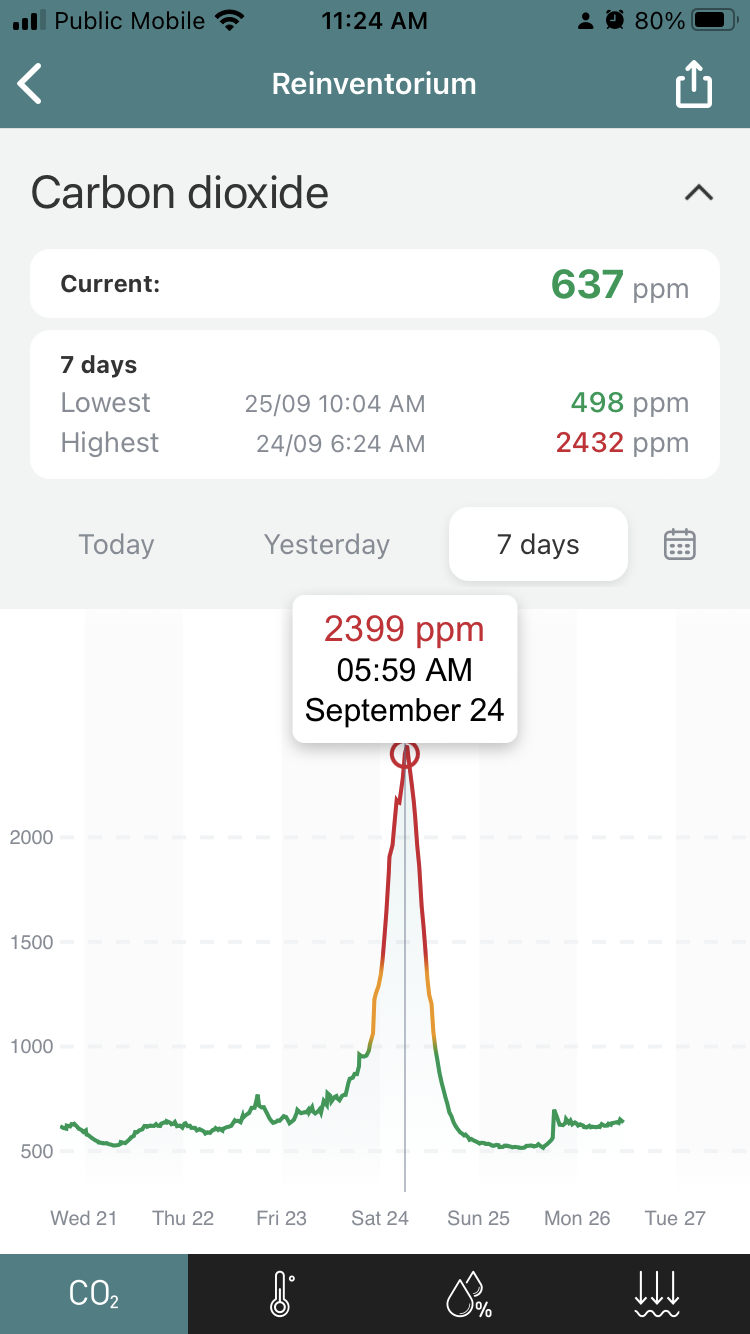We’ve just come out the other end of Hurricane Fiona. The worst of the storm passed through Prince Edward Island in the early morning hours of Saturday, September 24.
Inspired by a blog post from Matt Webb about monitoring CO2, in mid-summer I purchased an Aranet4 CO2 monitor and placed it on my desk in my basement office at St. Paul’s Church Parish Hall: I wanted to get a sense of the CO2 in the not-very-well-ventilated workspace.
I dropped in at the office this morning and downloaded the data for the past week into my phone. The device measures not only CO2, but also humidity, temperature, and pressure.
As expected, the lowest pressure of the last week was 5:39 a.m. on Saturday, at 960 hPa:

What I find interesting, is that this was coincident with the highest recorded CO2 on my station, 2432 ppm:

I don’t have the meteorological nor physics understanding to know how these two readings are related; I welcome any thoughts from those who know more than I.
 I am
I am
Comments
I was interested to find out
I was interested to find out why Fiona caused such a drop in pressure - please advise if you find out how this is related to CO2 - thanks - Brian
Cyclones (aka hurricanes in
Cyclones (aka hurricanes in the Atlantic) are storms rotating around an area of low atmospheric pressure (the eye of the storm). I don't know what the connection to CO2 is, though.
Hi, I googled this. It
Hi, I googled this. It appears that this is related to how CO2 detectors work. Apparently they don't measure absolute values but rather relative partial pressures, so when overall atmospheric pressure (that the device is also measuring) drops, the relative partial pressure of CO2 rises. Normally, with the routine relatively small variations in absolute atmospheric pressure, this vagary of the measured CO2 value is fairly minor, but can be eye-popping with deep depressions caused by powerful lows, such as hurricanes. I'm not an expert but the paper I read said, in summary: artifact of how the measuring unit works--designed to give some idea of CO2 levels in normal atmospheric circumstances ... not reliable when barometric pressure is extremely low.
This is ringing a bell. If I
This is ringing a bell. If I remember right, the multiple-contaminant sensor that I bought and immediately returned required users to repeatedly re-calibrate it by parking it outside awhile. Since the CO2 of concern is what accumulates indoors, this at least half makes sense with no further explanation. The other half is the dependence on barometric pressure, which varies a lot more day-to-day and hour-to-hour than does the concentration of CO2 on a typical porch.
Add new comment